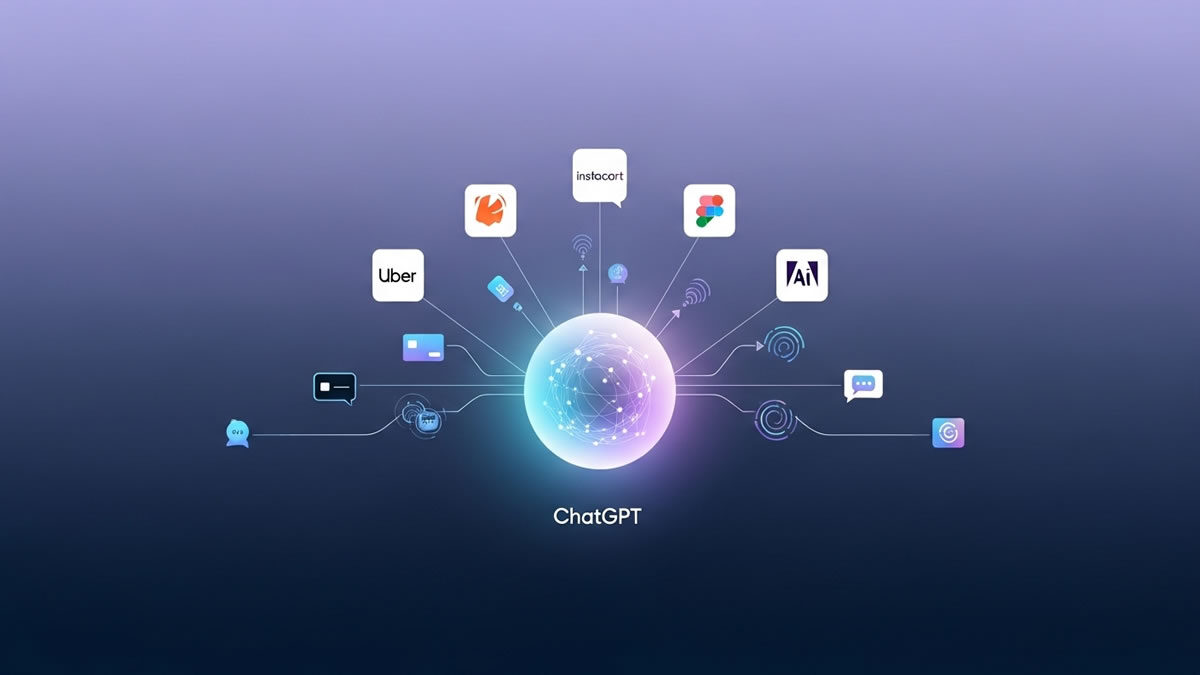OpenAI hosted its yearly developer day on Monday, where the organization unveiled its strategy to incorporate applications within ChatGPT. The presentation was remarkable, displaying how tools like Spotify and Figma can be accessed or located without leaving the ChatGPT interface.
With much of the technology industry rapidly advancing toward AI adoption, OpenAI’s demonstration offered the clearest glimpse yet of what an AI-first internet could truly resemble, with platforms like ChatGPT gathering information and executing tasks directly.
The Emergence Of AI-Based Payment Infrastructure
If you’ve been paying attention, you might have noticed that there’s considerable potential in this system for financial transactions. Recently, the company introduced Instant Checkout, an automated shopping framework that operates as a payment system for single purchases.
Stay up to date with the latest technology in TheTechCrunch.info, which covers artificial intelligence, mobile and web apps, modern things, cyber security, and general technical news. From AI’s successes to chat and generative tools, such as smartphones, laptops, and wearables’ special reviews, TheTechCrunch gives an insight into this case.

Connecting to various stores that sell through Shopify, Etsy, or Stripe. Now, apps provide the front-end framework, enabling service providers to create their personalized interface inside ChatGPT.
Building The Foundation For AI-Driven Commerce
In summary, OpenAI currently holds all the essential components for AI-based commerce, establishing ChatGPT as a platform where customers can purchase and businesses can market. It represents a massive new avenue of revenue for the company and one with vast implications across the technology sector. In this scenario, OpenAI isn’t merely competing with Google and Anthropic but also with Amazon and Walmart.
Expanding The Ecosystem Through App Partnerships
When examining OpenAI’s upcoming application collaborators in the release statement, the extent of the vision becomes evident. ChatGPT will soon be intelligent enough to position transportation through Uber. Schedule vacations via Expedia, and contact a plumber or locksmith by means of Thumbtack.
Order groceries through Instacart, request food from DoorDash, or obtain retail items from Target. With a bit more development, ChatGPT could evolve into a central hub for most users’ optional spending.
The Revenue Potential Behind AI Shopping
If successful, this approach would generate far more profit than a simple $20 monthly plan. The specific conditions of the agreements remain uncertain, but similar to any app marketplace, OpenAI is well-positioned to claim a portion of the money spent through its ecosystem. ChatGPT is also suggesting products by leveraging its vast user data, which further shifts the balance of influence between OpenAI and merchants.
According to Ben Thompson’s perspective, ChatGPT transforms into a super aggregator, channeling consumers to retailers and serving as an entry point for ever-expanding commercial activity. OpenAI has numerous potential revenue streams to explore, but it’s accurate to state that AI-driven commerce stands among the most profitable opportunities.
Rising Competition In The AI Shopping Landscape
OpenAI isn’t the only enterprise focusing on this possibility. On the same day as ChatGPT’s announcement, Adobe published a report forecasting that this year’s holiday season would be dominated by AI-enhanced shopping, with consumers relying on chatbots instead of search engines to locate the best available deals.
Another analysis by Mastercard labeled agentic commerce as a new competitive domain for financial technology. Google has also introduced its own rival protocol for agentic commerce known as AP2, which offers a broader scope but less momentum than OpenAI’s version.
The Future Of Intelligent Purchasing
The most straightforward form of AI-driven shopping involves using ChatGPT to search for products instead of traditional engines. For instance, if someone is looking for canvas sneakers below $80, ChatGPT can locate them as easily as Google Search. However, AI platforms don’t need to remain passive.
Explore a complete hub for the latest apps, smart things, and security updates online, ranging from AI-operated solutions and automation tools. TheTechCrunch.info offers in-depth articles, comparisons, and specialist analysis designed to understand the rapidly changing technology. Whether you are keen on robotics, data protection, or the latest digital trends.

The AP2 framework includes a feature for agent-initiated transactions, such as buying concert tickets as soon as they’re released or reserving flights when prices drop below a specific amount. There might also be agents representing sellers, negotiating deals, and combining offers under favorable conditions. If both businesses and buyers hold the concept. The alteration could range far beyond a simple purchase button.
Will Consumers Embrace AI Shopping?
The biggest unresolved issue is whether shoppers will actually be interested. AI-assisted shopping is obviously appealing to OpenAI, and organizations like Stripe and Mastercard see significant advantages in it too, yet consumers haven’t shown strong enthusiasm for agentic purchasing systems beyond straightforward product searches.
However, that might change soon; these systems are not yet widely accessible, and it will take several months before the typical user experiences a fully automated shopping assistant. When they eventually do, the overall response will determine how this innovation reshapes online commerce.
Here Are More Helpful Articles You Can Explore On TheTechCrunch.info:



One Response